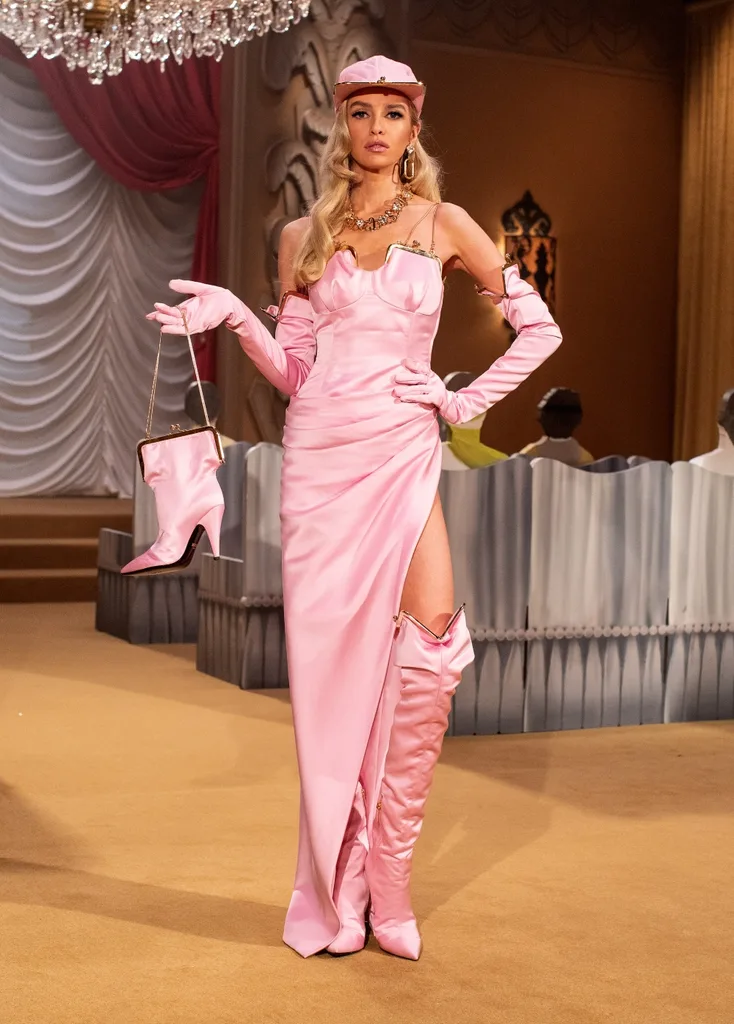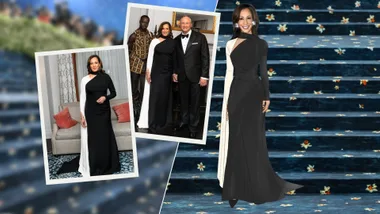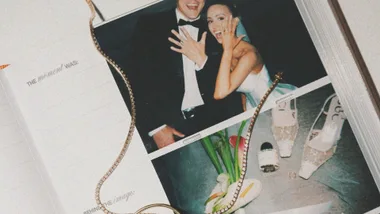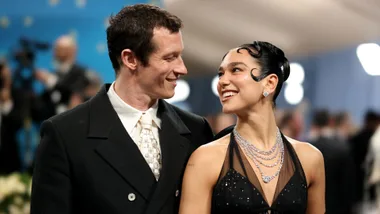I’m standing on a street in Sydney dressed in a hot-pink minidress and Barbie-esque platforms when a truck driver calls out a “heyyyyy sexy” as he drives past. Catcalling! In the year of our Lord 2022! I thought we were past that, but apparently all it takes is dressing like a bimbo for strange men to give me their opinions as they pass.
The next truck driver is a little less encouraging. “Slag,” he declares. Ah, the duality of man.

I’m dressed like a bimbo for a very important reason: to see if the TikTok favourite #bimbocore aesthetic works in the wild. Visually, bimbocore is exactly what you think it is: hyper-feminine, slightly sultry and pink everything. Emotionally it’s a little deeper. It’s “no thoughts, just vibes” but done in the name of feminism. Or something.
My moodboard for this challenge is a combination of Paris Hilton in the 2000s, Hailey Bieber dressed up as Lola Bunny and, of course, Elle Woods. When Legally Blonde premiered in 2001, Elle Woods (played to perfection by Reese Witherspoon) became an instant icon for subverting the dumb blonde stereotype. “What, like it’s hard?” was the refrain for women succeeding everywhere.
But it was only a few years later that we were treating Paris Hilton like a joke for having her sex tape leaked, instead of calling the act what it was: a sex crime. In the noughties, being feminine meant being dumb – a bimbo – and therefore less worthy of society’s respect.

In the years since, we’ve re- examined what it means to celebrate femininity. Phrases such as “I’m not like the other girls” became “I’m exactly like the other girls.” Now, thanks in part to TikTok and the resurgence of ’00s fashion, women are experimenting again with the hyperfeminine bimbo look. Only this time we’re the ones in control.
Or so it seems. When I try dressing like a bimbo for the office, I feel anything but in control. I’m wearing a hot-pink two-piece Ganni set and sky-high Steve Madden platforms (which are the more affordable version of the Valentino #barbiecore ones). I’ve accessorised with vintage pink Hermès gloves found on Depop, and a lilac Bottega Veneta bag that costs more than my mortgage. (Don’t worry, it was on loan.)
“Did you actually buy it?” one of my colleagues asks of the Bottega. “No, my sugar daddy did,” I quip in a singsong voice, and then immediately want to die.
I was hired for my brain. What am I doing? I make my colleague take a few photos of me lounging at my desk (see? She has brains and boobs) and then quickly change back into my regular jeans and oversized shirt.
On TikTok, videos tagged #bimbo-core have been viewed more than 58 million times. It’s a smorgasbord of miniskirts, Playboy-branded lingerie, and fur boots (a particular favourite of the Russian bimbocore sub-style). “You can’t take yourself too seriously,” Hannah Collins, a TikTok-famous singer known professionally as Scene Queen and widely credited as coining the term bimbocore, explains in a video.
“You have to have fun with yourself. Use the things people stereotype you for and use that to your advantage. If someone wants to slut-shame you, be the coolest slut you can be.”
And, really, that’s how I felt walking around Sydney. You want to call me sexy (or a slag)? Fine – at least I look good doing it.
Later that day I “de-bimbo” my clothes but leave my high ponytail and pink eyeshadow and head to the shops. Just as I’m starting to think that maybe bimbocore exists only on TikTok and not in the real world, I see her: another woman shopping in regular clothes and bimbocore makeup. Maybe there’s life in this trend yet.
This story originally appeared in the January issue of marie claire.










